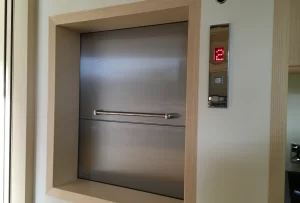HML’s Recertification: Reliable Lift Service For Your Vessel

HML’s recertification process represents a deep commitment to quality, safety, and proactive lift maintenance, ensuring that every onboard lift system, whether a guest lift, crew lift, cargo lift or dumbwaiter, continues to function flawlessly.
Find out more about HML’s expertise
Why HML’s Recertification Is Important For Operational Reliability
While a legal authority does not issue HML’s recertification, it carries significant operational weight. It signals that a lift has been thoroughly inspected, well-maintained, and remains in good working condition, providing peace of mind to owners, captains, engineers, operators, and guests. On a superyacht, discretion, seamless service, and comfort are expected; on an offshore vessel routine and steady operation are paramount. In both cases a malfunctioning lift is not just an inconvenience, it disrupts the rhythm of daily life onboard.
Our annual lift recertification serves as an operational reassurance: the system has been checked, adjusted, and confirmed as safe and functional by the team that built it. The technicians know the system inside and out. Many of them maintain long-standing relationships with chief engineers and operators and return to the same vessels year after year.
How Regular Marine Lift Inspections Ensure Safety
Regular inspections form the backbone of our maintenance process. These checks allow our technicians to monitor wear and tear over time, especially on working vessels such as offshore support ships and navy vessels, where lifts operate under heavy usage. On these platforms, recertification also acts as a critical third-party verification, as crews often carry out basic repairs themselves.
On yachts, usage is typically lighter, meaning that many issues can often be anticipated well in advance. If a technician notices worn door rollers, air filters, or hydraulic filters during a scheduled visit, they will log the necessary parts. This ensures they are available for the next appointment, rather than replacing anything unnecessarily on the spot. This proactive but economical approach minimises downtime and cost while maintaining the highest safety standards.
We also respond rapidly when issues arise unexpectedly. In one case, a faulty door motor required a replacement that was unavailable locally. While the part was en route from France, our team managed our schedule by servicing nearby yachts and returned to complete the job as soon as the part arrived, avoiding costly delays for the client.
Discover what else is included in HML’s annual inspection
Difference Between HML’s Certification and Official Legal Requirements
Unlike legal certifications mandated by flag states or classification societies, HML’s recertification is a voluntary, client-focused service. It reflects the company’s dedication to quality control, ongoing support, and brand accountability. It’s not about fulfilling legal minimums, it’s about exceeding expectations and helping captains and owners avoid problems before they arise.
Providing Reassurance To Yachts, Offshore and Naval Vessels
When it comes to marine lifts, reliability is non-negotiable. We understand that lift systems must always be running and that a delayed repair can quickly escalate into an operational bottleneck. That’s why our annual checks are comprehensive, efficient, and designed to fit within the busy schedules of shipyards and global itineraries.
Chief engineers and operators often report their own findings, such as fraying cables or unresponsive doors. These reports help guide our inspection process, allowing technicians to prepare relevant spare parts in advance. If required, we may even borrow parts from other vessels to keep a priority lift running, demonstrating our flexibility and focus on guest experience.
If a yacht is temporarily out of reach, e.g. in Singapore or Australia, we will try to coordinate nearby jobs or request a short certificate extension (typically up to 3-6 months, not exceeding 18 months in total), until the vessel returns to Europe. However, without an inspection, after a maximum of 18 months, the certificate is no longer valid, and captains know that guest satisfaction and insurance coverage may be affected.
Check out HML’s past work
How Recertification Aligns With Industry Best Practices
Superyachts are unique environments, pristine, quiet, and tailored for discretion. They differ significantly from working offshore and naval vessels, which are noisier, oilier, and often have multiple teams working simultaneously. Offshore and naval vessels have their own operators who will do routine inspections of their marine crew and cargo lifts; on a superyacht, our technicians will find the lifts exactly as we left them in the last inspection. This consistency allows for precise maintenance and creates an ideal setting for high-standard engineering.
Maintaining the bespoke systems we have installed onboard requires expertise, consistency, and clear communication between yacht engineers and our service coordinators. Our process is detailed and structured and most importantly, we personalise the service to each yacht. We prefer to send our technician who knows the lift best, ensuring a single annual visit is all that’s needed.
Our recertification process is about more than checking boxes, it’s a mark of ongoing care, deep technical knowledge, and proactive support. Whether your vessel is a high-end superyacht or a hard-working offshore ship, this system ensures your lift continues to operate smoothly, silently and safely, exactly as it should.